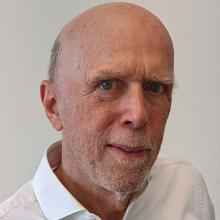Keratoconus in children
In 2022, Rubido et al. published a comprehensive review paper entitled ‘Keratoconus: An updated review’ in “Contact Lens and Anterior Eye”.1 In this paper, the authors present estimated prevalence and incidence rates for keratoconus of 0.2 to 4,790 per 100,000 people and 1.5 to 25 cases per 100,000 people per year. The highest number was among 20 to 30-year-olds and people from the Middle East and from the Middle East and Asian ethnic groups.
Clinicians in optometry and ophthalmology know from their daily practice that keratoconus can also occur in children. Medical databases such as PubMed offer a number of interesting publications on early childhood keratoconus. All publications show that pediatric keratoconus is more aggressive than in adults. However, there are only a few new and sometimes contradictory publications in the literature on the prevalence and incidence of keratoconus in children.
A recent paper ‘Keratoconus in preschool children: demographic data and clinical profile’ by Tharini et al. can be found in the September 2022 issue of the Indian Journal of Ophthalmology. Over a period of ten years (2006-2015), 5,878 patients were diagnosed with keratoconus in a tertiary eye center in India. Of these, 5.1% were children younger than twelve years old. The average age of the affected children was 9.3 ± 1.8 years.2
A lower number of children with keratoconus was found by Bikbov et al. in Russia. In this study, 42 (0.086%) of 4,890 children were diagnosed with keratoconus. The group included 1,807 (37.0%) Russians, 1,709 (34.9%) Tatars, 1,172 (24.0%) Bashkirs, 32 (0.7%) Chuvashes, 4 (0.1%) Mari and 166 (3.4 %) children of other or unspecified ethnicity.3
More recent data on early childhood keratoconus can be found by Sarria Calderón et al. in their retrospective observational study (cross-sectional study), which involved 426 children younger than 18 years. Keratoconus was diagnosed in 40 children (9.4%) with an average age of 14.9 years.4
The current OCL issue also contains three interesting publications on keratoconus. These include
- A Review on current developments in early ectasia detection – the corneal biomechanical analysis
- Globe Subluxation in the Specialty Contact Lens Practice
- Scleral contact lens treatment for corneal contact lens intolerance after keratoplasty
The diagnosis of corneal ectasia as well as the possibilities for the visual rehabilitation of affected patients is now more complex than ever thanks to the latest imaging techniques and treatment options.
This is particularly true in the context of pediatric keratoconus.
[1] Santodomingo-Rubido, J., Carracedo, G., Suzak, A., Villa-Collar, C., Vincent, S. J., Wolffsohn, J. S. (2022). Keratoconus: An updated review. Cont. Lens Anterior Eye, 45, 101559.
[2] Tharini, B., Sahebjada, S., Borrone, M. A., Vaddavalli, P., Ali H., Reddy, J. C. (2022). Keratoconus in pre-teen children: Demographics and clinical profile. Indian J. Ophthalmol., 70, 3508-3513.
[3] Bikbov, M. M., Kazakbaeva, G. M., Gilmanshin, T. R., Iakupova, E. M., Fakhretdinova, A. A., Tuliakova, A. M., Panda-Jonas, S., Rusakova, IA., Gilemzianova, L. I., Khakimov, D. A., Miniazeva, L. A., Usubov, E. L., Jonas, J. B. (2023). Prevalence and Associations of Keratoconus Among Children, Adults, and Elderly in the Population-Based Ural Eye Studies. Asia Pac. J. Ophthalmol. (Phila)., 12, 591-603.
[4] Sarria Calderón, N. A., Martínez Córdoba, C. J., Pinedo Agudelo, J. A., Rosas Apraez, J.A., Revelo Álvarez, M. L. (2024). Keratoconus Frequency and Associated Risk Factors Among Patients Younger Than 18 Years With Significant Refractive Errors. Cornea, 1, 43, 585-590.
